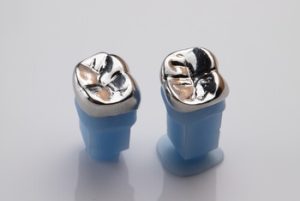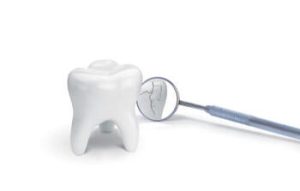A tooth filling is a common dental procedure used to treat tooth decay, restoring the tooth’s strength and function. However, it’s not uncommon to experience tooth sensitivity after a filling, particularly when exposed to hot or cold foods, cold air, or extra pressure while biting. This pain and sensitivity can range from mild discomfort to sharp pain, leaving many patients wondering if something has gone wrong.
If you’ve recently undergone a filling procedure and are dealing with heightened sensitivity, you’re not alone. This article will explore why this happens, how long it lasts, and what you can do to manage it.
Why Do You Experience Sensitivity After a Filling?
Sensitivity following a dental filling is usually temporary and occurs for several reasons. The most common causes include:
 1. Nerve Irritation from the Filling Procedure
1. Nerve Irritation from the Filling Procedure
When a dentist fills a cavity, they use a dental drill to remove tooth decay. This process generates heat, which can trigger sensitivity by irritating the tooth’s nerve endings. While the tooth pulp typically recovers, it may continue to feel sensitive for several weeks following the treatment.
2. Deep Fillings That Affect the Tooth’s Nerve
If the decay is extensive, requiring deep fillings, the tooth’s nerve may be more exposed. The closer the filling materials are to the tooth pulp, the more likely you are to feel sensitivity when eating hot or cold foods or drinking cold liquids.
3. An Incorrect Bite Alignment
Sometimes, the new filling may sit slightly too high, leading to extra pressure when biting. This can lead to intense pain and may also cause referred pain, where nearby teeth experience discomfort despite not being directly treated.
4. Sensitivity Due to Different Filling Materials
The type of filling materials used can also play a role in tooth sensitivity. Silver fillings (amalgam fillings) expand and contract more with temperature changes than composite fillings, which could lead to discomfort.
5. Dentin Hypersensitivity in the Affected Tooth
Some individuals naturally have sensitive teeth due to dentin hypersensitivity. If the tooth’s nerve was already vulnerable before treatment, it could result in increased sensitivity after the dental procedure.
6. Phenomenon Called Referred Pain
Some patients may notice tooth sensitivity after a filling in teeth surrounding the treated tooth, even though those teeth weren’t worked on. This is known as referred pain, where discomfort radiates from the affected area to surrounding teeth or even the opposite side of the mouth.
7. Allergic Reaction to the Filling Materials
Although uncommon, some individuals may have an allergic reaction to amalgam fillings or other filling materials, leading to unusual sensations, discomfort, or sensitivity in both the filled tooth and surrounding teeth.
How Long Does Sensitivity Last After a Filling?
For most people, sensitivity after a filling lasts between two to four weeks. The discomfort should gradually lessen as the pulp remains healthy and the tooth adjusts to the new filling. However, if the pain worsens or lingers beyond a month, it may indicate further decay, a broken tooth, or an underlying issue requiring additional dental treatment.
When Should You Contact Your Dentist?
While some sensitivity is normal, certain signs may suggest a more serious problem. You should contact your dentist if you experience:
- Extreme pain that doesn’t improve over time
- Sharp pain when biting down, even on soft foods
- Sensitivity that worsens instead of improves over a few weeks
- A cracked or broken tooth near the filling site
- Tooth pain spreading to the opposite side of your mouth
- A single tooth experiencing prolonged discomfort
Your dentist may need to adjust the new filling, replace it with a different material, or, in severe cases, recommend a root canal treatment if the tooth pulp is damaged.
Effective Ways to Manage Tooth Sensitivity After a Filling
It’s normal to experience tooth sensitivity after a filling, but it can be uncomfortable. Thankfully, there are easy ways to relieve discomfort and safeguard your treated tooth. Here are some effective strategies to help manage sensitivity and promote healing.
1. Avoiding Hot and Cold Foods
Limit your intake of hot or cold foods and beverages, as extreme temperatures can trigger sensitivity in the treated tooth.
2. Use OTC Pain Relievers
Over-the-counter (OTC pain relievers), like ibuprofen, can help reduce discomfort until the sensitivity subsides.
3. Switch to a Desensitising Toothpaste
A toothpaste designed for sensitive teeth helps protect exposed nerve endings and reduce pain signals from the filled tooth.
4. Chew on the Opposite Side
If you have multiple fillings or one tooth that is particularly sensitive, try chewing on the opposite side of your mouth to minimise discomfort.
5. Maintain Regular Dental Visits
Seeing your dentist regularly ensures that any further decay or issues with your filling materials are caught early, preventing significant pain or the need for a gold crown or root canal.
6. Avoid Hard or Sticky Foods
Hard foods can put extra pressure on your filled tooth, while sticky foods may pull on the new filling, potentially dislodging it.
7. Use a Soft-Bristled Toothbrush
Brushing with a soft-bristled toothbrush can prevent irritation to the affected tooth and surrounding teeth, reducing overall pain and sensitivity.
8. Stay Away from Cold Air
Cold air can sometimes worsen tooth sensitivity. If you’re experiencing discomfort when breathing in, try covering your mouth with a scarf in colder weather.
When Is a Root Canal Necessary?

- The tooth pulp is damaged beyond repair
- The pain and sensitivity persist despite all remedies
- The treated tooth develops an infection
- A broken tooth exposes the inner nerve endings
Your dentist will assess whether the pulp remains healthy or if a root canal is the best course of action.
FAQs About Tooth Sensitivity After a Filling
- Can cold air make my tooth sensitive after a filling?
Yes, exposure to cold air can trigger tooth sensitivity, especially if the nerve endings are irritated. Covering your mouth in cold weather can help.
- Why does my tooth feel an odd sensation after a filling?
An odd sensation could be due to nerve irritation, an incorrect bite, or the filling material adjusting to your tooth. It usually resolves in a few weeks.
- Can a silver filling cause more sensitivity than a composite filling?
Yes, silver fillings (amalgam fillings) expand and contract with temperature changes, which can increase pain and sensitivity compared to composite fillings.
- Can sensitivity indicate a failed filling?
If sensitivity worsens or the pain becomes extreme, it could mean the filling is loose, improperly placed, or the tooth has further decay. Visit your dentist for an evaluation.
- Will a gold crown help with sensitivity after a deep filling?
A gold crown can protect a filled tooth with deep decay by reducing nerve exposure and preventing further decay.
- Does grinding my teeth worsen sensitivity after a filling?
Yes, extra pressure from grinding (bruxism) can aggravate a filled tooth and cause heightened sensitivity. A mouthguard may help.
- Can eating too soon after a filling cause pain?
Yes, eating immediately after a dental procedure—especially hard or sticky foods—can put pressure on the new filling, leading to discomfort.
- Why do I feel pain in a single tooth that wasn’t filled?
This may be due to referred pain, where the nerves in surrounding teeth react to the changes in the treated tooth.
- Can sensitivity after a filling be permanent?
In rare cases, if the tooth’s nerve is severely damaged, permanent sensitivity may occur, requiring a root canal treatment.
- Do regular dental visits help prevent sensitivity after fillings?
Yes, regular dental visits allow your dentist to monitor your fillings, catch early decay, and ensure your teeth remain healthy.
Final Thoughts: Managing Sensitivity After a Filling

By taking simple steps such as avoiding hot or cold foods, using OTC pain relievers, and practising good oral hygiene, you can speed up the healing process. However, if sensitivity after a filling lasts longer than a few weeks or worsens, don’t hesitate to contact your dentist to ensure the tooth is healing properly.
Would you like to discuss your concerns with a professional? Book an appointment with Finesse Dental at (02) 8806 0790, keep your teeth in top shape, ensuring long-term oral health.
Note: Any surgical or invasive procedure carries risks. Before proceeding, you should seek a second opinion from an appropriately qualified health practitioner.
References
- GoodRx. (n.d.). Popular over-the-counter pain relievers. Retrieved from https://www.goodrx.com/conditions/pain/popular-over-the-counter-pain-relievers
- Medical News Today. (n.d.). What to know about root canal treatment. Retrieved from https://www.medicalnewstoday.com/articles/142780
- Healthline. (n.d.). Tooth sensitivity after a filling: What to expect. Retrieved from https://www.healthline.com/health/tooth-sensitivity-after-filling
- WebMD. (n.d.). Dental fillings. Retrieved from https://www.webmd.com/oral-health/dental-health-fillings


 1. Nerve Irritation from the Filling Procedure
1. Nerve Irritation from the Filling Procedure